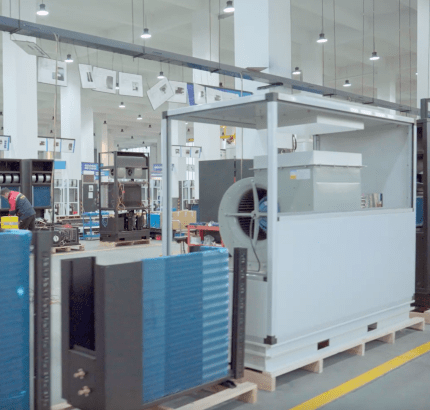Enhancing Cold Storage Performance with Advanced Humidification Solutions
The integration of ultrasonic humidifiers into existing refrigeration units represents a significant advancement in cold storage technology. This sophisticated approach to humidity control not only preserves product quality but also optimizes energy efficiency across commercial and industrial refrigeration systems. Understanding the proper integration methods and benefits can transform standard cooling units into high-performance preservation systems.
Understanding Ultrasonic Humidification Technology
Core Operating Principles
Ultrasonic humidifiers refrigeration systems operate through high-frequency vibrations that transform water into a fine mist. These vibrations, typically occurring at frequencies above 20 kHz, create microscopic water droplets that disperse evenly throughout the refrigerated space. This method proves particularly effective because it doesn't generate heat like traditional steam humidifiers, making it ideal for temperature-sensitive environments.
The technology utilizes piezoelectric transducers that convert electrical energy into mechanical energy, creating ultrasonic waves that atomize water molecules. This process results in uniformly sized water particles approximately 1-5 microns in diameter, ensuring optimal absorption into the air without wetness or condensation issues.
Benefits of Ultrasonic Technology in Cold Storage
The implementation of ultrasonic humidifiers refrigeration solutions offers numerous advantages over conventional humidification methods. Energy consumption typically reduces by 85-90% compared to steam-based systems, while providing precise humidity control within ±1-2% relative humidity. This accuracy is crucial for maintaining optimal storage conditions for sensitive products.
Additionally, the cool mist produced by ultrasonic systems doesn't interfere with the refrigeration unit's temperature control mechanisms, allowing for more stable environmental conditions. This synergy between cooling and humidification results in improved product preservation and reduced energy costs.

Installation and Integration Process
Pre-Installation Assessment
Before integrating ultrasonic humidifiers refrigeration components, a thorough evaluation of the existing system is essential. This includes analyzing current humidity levels, airflow patterns, and temperature distribution within the storage space. Technicians should also assess the electrical infrastructure, water quality, and available mounting locations to ensure optimal system performance.
The assessment phase should include calculating the required humidification capacity based on room volume, air exchange rates, and desired humidity levels. This data helps determine the appropriate size and number of ultrasonic units needed for effective coverage.
Component Placement and Configuration
Strategic positioning of ultrasonic humidifiers within the refrigeration system is crucial for uniform humidity distribution. The units should be installed upstream of any air distribution systems, allowing the mist to fully integrate with the airflow before reaching stored products. Proper drainage systems and water supply connections must be carefully planned to prevent any potential water-related issues.
Installation should incorporate proper filtration systems to ensure water quality meets specifications for ultrasonic operation. This typically includes reverse osmosis or deionization systems to prevent mineral buildup and ensure consistent performance.
System Management and Maintenance
Control System Integration
Modern ultrasonic humidifiers refrigeration systems require sophisticated control mechanisms to maintain optimal conditions. Integration with existing building management systems allows for automated operation based on real-time humidity and temperature readings. Advanced controllers can adjust output levels dynamically, ensuring consistent environmental conditions while minimizing energy consumption.
Implementation of remote monitoring capabilities enables facility managers to track system performance, receive maintenance alerts, and adjust settings from anywhere. This connectivity improves response times to environmental changes and helps prevent potential issues before they impact stored products.
Regular Maintenance Requirements
Maintaining ultrasonic humidifiers in refrigeration environments requires specific attention to key components. Regular cleaning of transducers, water filters, and distribution nozzles ensures optimal performance and prevents bacterial growth. Water quality should be monitored consistently, with filtration systems serviced according to manufacturer specifications.
Preventive maintenance schedules should include quarterly inspections of electrical connections, water lines, and control systems. This proactive approach helps maximize system longevity and maintain efficient operation throughout the equipment's lifecycle.
Frequently Asked Questions
What water quality requirements are necessary for ultrasonic humidifiers in refrigeration systems?
Ultrasonic humidifiers require demineralized or reverse osmosis treated water with conductivity below 20 microSiemens/cm. The water should be free from minerals and contaminants to prevent scaling and ensure optimal mist generation.
How does ultrasonic humidification affect energy consumption in refrigeration units?
Ultrasonic humidification typically reduces overall energy consumption by 80-90% compared to traditional steam systems. The technology requires minimal energy to operate and doesn't generate heat that would need to be removed by the refrigeration system.
What is the typical lifespan of ultrasonic transducers in cold storage applications?
With proper maintenance and water quality management, ultrasonic transducers typically last 15,000 to 20,000 operating hours. Regular cleaning and calibration can extend this lifespan, making them a cost-effective long-term solution for refrigeration humidity control.

